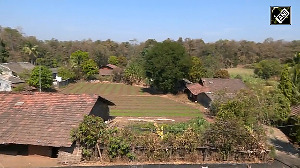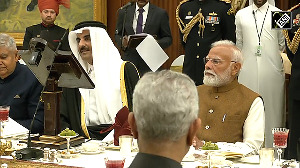The fact is that we talk about subsidies in rather simplistic economic terms, as good or bad expenditure by government to provide for needs that are not affordable by the poor.
The answer then, is to reduce subsidy as the poor become richer and to pass on the burden through user charges - paying for the cost of producing electricity; supplying water and, of course, in this case, fuel to cook food.
If pushed further, the same economists will tell you that for purposes of social justice, the subsidies can continue but in a targeted manner (a misnomer for saying that in this case, the subsidy will only go to those it is meant to reach: the poor).
Therefore, the assumption is that subsidies are for the poor and that the rich must and can pay full costs of the resource.
The fact is in India, most subsidies are not for the poor but for the rich. The fact also is that the reason we need to remove subsidies is because the state cannot bear the expenditure of larger numbers of people.
In other words, it cannot afford a larger number of Indians to become richer and become the users of the subsidised goods that were the privilege of some. It is also assumed that Indians, once they become rich (or richer), can pay for the same subsidised good at full cost.
We do not question the fact that given the current technology or method of production, even the middle-rich (not the richest) will not be able to afford full cost. And that what is really needed is not to reduce subsidy per se, but to seriously rethink technology so that it can provide not just for some but for all.
Take the case of LPG. This fuel has been traditionally subsidised, even though it has been the cooking energy of the more affluent. But over time, given the lack of alternatives available and its obvious benefits, LPG has become the fuel, not just of the rich but also of the middle-lesser middle rich.
The question is then, if people are rich enough to pay the price of LPG, without the subsidy? The average use of gas is roughly one cylinder each month by a household, but richer families use more gas and, therefore, more subsidy. But this is not to say that the poorer households are not using gas.
The 55th round of the National Sample Survey reveals that the fuel penetration is in lower-middle urban households, where use is growing but purchasing power is not. In this scenario, what are the options? The current subsidy is inadequate to meet the fuel needs of vast numbers of people, but it is too high to be sustained by oil companies.
The answer is to reduce costs of technology or to change the ways of production so that more people can afford to pay. The answer is to rework our technological options - from thinking of advanced bio-gas in rural and urban India for cooking fuel. The fact is that we do not need "alternative technologies" only for the poor, but also for the rich.
Otherwise, the socialism-Indian style will continue to mean where the rich are subsidised in the name of the poor.
Do you want to discuss stock tips? Do you know a hot one? Join the Stock Market Investments Discussion Group








 © 2025
© 2025